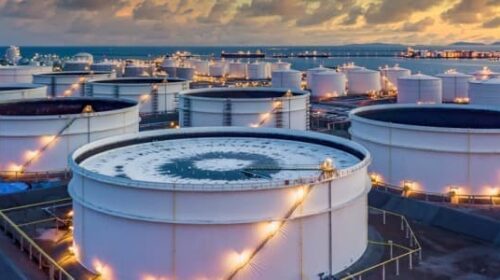Europe’s campaign to quit Russian fuel is designed to punish Moscow for its invasion of Ukraine. It’s also wreaking havoc thousands of miles away from the conflict, plunging Pakistan into darkness, undermining one regime and threatening the stability of the country’s new leadership.
A decade ago, the world’s fifth-most populous country took specific steps to insulate itself from the kinds of violent price spikes that are roiling the market today. It made a massive investment in liquified natural gas and signed long-term contracts with suppliers in Italy and Qatar. Now some of those suppliers have defaulted, though they continue to sell into the more lucrative European market, leaving Pakistan in exactly the position it tried so hard to avoid.
In order to avoid blackouts during the Eid holiday last month, the government paid nearly $100 million to procure a single LNG shipment from the spot market, a record for the cash-strapped nation. In the fiscal year ending July, the country’s costs for LNG could top $5 billion, twice what they were a year ago. Even so, the government can’t cushion the blow for its citizens: The International Monetary Fund is in talks to bail out the nation with a key condition that it cuts fuel and electricity subsidies.
Now parts of Pakistan are experiencing planned blackouts of more than 12 hours, limiting the effectiveness of air conditioning to offer relief during the ongoing heatwave. The previous prime minister continues to draw large crowds to rallies and protests, amplifying citizens’ anger about inflation that’s rising at 13.8%. Prime-time talk show hosts regularly discuss how Pakistan will get the fuel it needs, and how much it will have to pay.
Last week, the government announced a new raft of energy-saving measures. Civil servants were released from regular Saturday shifts, and the budget for security personnel was slashed 50%.
I am acutely aware of the hardships people are facing,” Prime Minister Shehbaz Sharif said in a tweet in April ahead of the Eid holiday. He ordered his government to resume purchasing expensive overseas natural gas shipments that same week. And earlier this month he warned that they don’t have enough money to continue buying gas from overseas.
The supply crunch will go beyond blackouts. The government has redirected existing natural gas supplies to power plants, short-changing fertilizer makers that depend on the fuel as a feedstock. That move could threaten the next harvest, leading to even higher food costs next year. Cellphone towers are using backup generators to sustain service through the blackouts, but they too are running out of fuel.
There’s little reprieve on the horizon. The cost of LNG has surged by more than 1,000% in the last two years, first on post-pandemic demand, then on the Russia invasion of Ukraine. Russia is Europe’s biggest supplier of natural gas, and the threat of supply disruptions sent spot rates to a record in March.
Meanwhile, Europe has been demanding more and more LNG. So far this year, Europe’s LNG imports are up 50% from the same period last year and aren’t showing any sign of slowing down. Policymakers in the European Union drafted a plan to significantly increase LNG deliveries as an alternative to Russian gas as they break ties with President Vladimir Putin’s regime over the war in Ukraine. Countries like Germany and the Netherlands are fast-tracking the construction of floating import terminals, with the first ones slated to start within the next six months.
“Europe is sucking LNG” from the world, said Steve Hill, executive vice president at Shell Plc, the world’s top trader of the fuel. “But that means less LNG will go to developing markets.”





